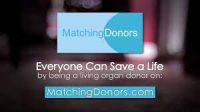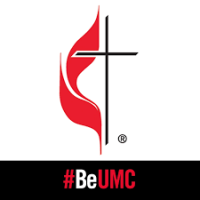 By David R. Shorey, East County Program Manager, Institute for Public Strategies
By David R. Shorey, East County Program Manager, Institute for Public Strategies
October 4, 2022 (San Diego’s East County) -- There is an opioid epidemic in the United States that stretches into California and San Diego County. People who use drugs are dying from overdoses in record numbers, including 12 kids under the age of 18 who died in San Diego County from opioid overdoses in 2021. A proven strategy to address the rising opioid overdose deaths is through widespread naloxone distribution in our communities which should include local school campuses for grades 6-12. Even one child using drugs and putting their life in jeopardy is one too many.
To promote awareness and aid school districts in obtaining naloxone, the San Diego County Office of Education has gathered a variety of resources to provide instruction and guidance in this process. A naloxone tool kit can be found on the SDCOE website and the California Department of Health Care Services Naloxone Distribution Project website. Naloxone is a medication which reverses the effects of an opioid overdose. It can bring someone back to life. Its broad distribution provides a safety net so that its life saving capabilities are available when and where an opioid overdose occurs.
The State of California Education Code allows for school districts, county offices of education and charter schools to provide emergency naloxone to school nurses or trained personnel who have volunteered to provide emergency medical aid. There is no need for school board approval. The choice can be made by the district superintendent or school principal. It would be ideal if every campus with grades 6-12 had at least two doses of naloxone available, even more on campuses with larger student enrollment.
 This is keeping in line with the Countywide Comprehensive Harm Reduction Strategy that was established by the Board of Supervisors in January 2021 and aims to utilize evidence-based approaches to address substance use and overdose deaths. Its mission is “To protect San Diegans from the individual, family, and community impact of drug use by enacting a harm reduction approach toward substance use which prioritizes human dignity, saving lives, providing appropriate levels of care for people who use drugs and best practices in addressing substance use and addiction.”
This is keeping in line with the Countywide Comprehensive Harm Reduction Strategy that was established by the Board of Supervisors in January 2021 and aims to utilize evidence-based approaches to address substance use and overdose deaths. Its mission is “To protect San Diegans from the individual, family, and community impact of drug use by enacting a harm reduction approach toward substance use which prioritizes human dignity, saving lives, providing appropriate levels of care for people who use drugs and best practices in addressing substance use and addiction.”
 There is an eight-minute naloxone training video available on the California Department of Public Health website. A New PATH (Parents for Addiction Treatment and Healing), is a Spring Valley nonprofit that also makes naloxone available along with a training video on how to administer it. The San Diego Prescription Drug Abuse Task Force also has a resource page with links to a naloxone training video, PowerPoint presentation and other related materials. Let’s be prepared. We don’t want a situation where a student overdoses and there is no naloxone on hand. If you are someone you know is looking for help to address their substance use disorder, the Access and Crisis line can offer resources for treatment. The number to call is 1-888-724-7240.
There is an eight-minute naloxone training video available on the California Department of Public Health website. A New PATH (Parents for Addiction Treatment and Healing), is a Spring Valley nonprofit that also makes naloxone available along with a training video on how to administer it. The San Diego Prescription Drug Abuse Task Force also has a resource page with links to a naloxone training video, PowerPoint presentation and other related materials. Let’s be prepared. We don’t want a situation where a student overdoses and there is no naloxone on hand. If you are someone you know is looking for help to address their substance use disorder, the Access and Crisis line can offer resources for treatment. The number to call is 1-888-724-7240.
 IPS works alongside communities to build power, challenge systems of inequity, protect health and improve quality of life. IPS has a vision for safe, secure, vibrant and healthy communities where everyone can thrive. To find out more about IPS East County, follow us at: https://www.facebook.com/IPSEastCounty or by clicking on the links to our social media platforms: IPS East County Facebook, IPS East County Twitter, East County Youth Coalition Instagram.
IPS works alongside communities to build power, challenge systems of inequity, protect health and improve quality of life. IPS has a vision for safe, secure, vibrant and healthy communities where everyone can thrive. To find out more about IPS East County, follow us at: https://www.facebook.com/IPSEastCounty or by clicking on the links to our social media platforms: IPS East County Facebook, IPS East County Twitter, East County Youth Coalition Instagram.





















Recent comments